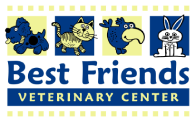Normal Puppy Play vs. Aggression
HOW CAN YOU TELL?
Puppies can play rough. Puppy play consists of chasing, pouncing, barking, growling and biting. Many pet owners mistake normal play behavior as aggression or laugh off behavior that is a warning sign for truly aggressive behavior. Although normal play can become intense, it’s important to be able to distinguish normal from abnormal behavior.
In normal play,a puppy may bow (lower its head and raise its hind end), present its front and side to the owner, wag its tail, dart back and forth, emit high pitched barks and growls, and spontaneously attack people or objects. Generally, its ears will be up and its mouth will be open and relaxed.
Problem behaviors are prolonged, deep tone growling, a fixed “staring” gaze, stiff posture and lip curling. The ears are more likely to be pinned back. Instead of a lowering of the head and raising of the back legs in a play bow, the puppy is likely to be standing rigidly. Puppies less than 12 weeks of age that react to pain or fear by growling or snapping are responding abnormally. Puppies in a dog pack would be attacked if they responded aggressively to correction by an adult dog. It isn’t normal brain development for a puppy to do that to people or other dogs. The younger a dog is when it shows serious aggressive behaviors, such as growling or snapping when handled, the more likely it will bite and injure humans in the future.
Punishment methods of training have been shown to worsen aggression. 80% of dogs presented to behavioral specialists for problem aggression have been trained by their owners at home using punishment methods. The more skilled and reward-based training, the more well adjusted and friendly the dog will be. Bad training creates bad dogs. Most dog owners spend way to much time correcting behaviors they perceive as wrong and far too little time teaching the puppy what they want it to do instead. Don’t punish – instead, reward the pet when it does something right.
Here’s how:
- Distract from bad behavior. Always have a toy on hand that the puppy can transfer its attention to. In other words, when puppy is excited and attacking your feet or hands, redirect him toward a toy.
- Speak up and step out. If the puppy bites to hard, yell “ouch” and step back. Don’t play anymore. This is what littermates do and how they teach each other not to play too roughly. A hard bite gets a yelp and a withdrawal from play.
- Interrupt problem behaviors. You can interrupt problem behaviors by startling the puppy, not punishing it. A shake can with pennies or gravel in it that rattles, a water gun, a clap or an “eh” or “bah” sound will startle the puppy so that it stops the undesirable behavior. Then you have about two seconds to entice the puppy to do something else instead. Be careful not to scare timid puppies, though, as a shaker can may frighten your pet too much.
- When your puppy is quiet and relaxed, praise it or give treats. Reward the behavior you want the puppy to exhibit as an adult dog.
- Give the puppy a time out if it’s too wound up and snappy. Put it in its own room or crate with some toys until it calms down.
- Set up a dragline indoors or out. If your puppy has a leash you can quickly grab it’s easier to pull him away from something naughty. Don’t punish, just interrupt.
- Provide plenty of exercise. Kids that have recess concentrate better in class afterwards and the same is true of dogs. Many get far less running and playing than they need to grow up healthy, strong and relaxed. (Running on pavement isn’t good for young bones and joints, keep playtime on the snow, grass or carpeting.) Try playing monkey in the middle. Have two people armed with treats. One calls the puppy, gives it a treat and then the other immediately calls the puppy to the other end of the room, house or yard, also for a treat. You stay still, the puppy runs back and forth.
- Provide mental stimulation too. Kong toys, puzzle toys, learning tricks and commands or heading out for an adventure keep a puppy busy and happy.
- Provide socialization to people and places between 8 and 12 weeks of age and socialization with other puppies and calm adult dogs between 12 and 16 weeks of age. The more socialization a puppy gets, the better behaved he or she will be under all kinds of circumstances. (Don’t go to the dog park, though, until the puppy has completed its full vaccination series.)
- Teach your dog basic obedience commands, preferably in a class. Learn from an expert how to train your dog properly. Avoid trainers who use aversive or punishment methods themselves, such as prong collars or shock collars. You wouldn’t want your children hit, slapped or choked in class; your dog shouldn’t get that treatment either.
- Use head halters for adolescent dogs. These training tools make all the difference when it comes to barking, lunging and other unruly behaviors, without pain or choking.
- Do not use any physical punitive measures, such as scruff shakes, alpha rollovers, squeezing or shoving the pet to the floor, hitting or swatting. Do unto the puppy as you would have it done unto you as an adult dog. Aggressive, fearful or anxious dogs are often made, not born.
